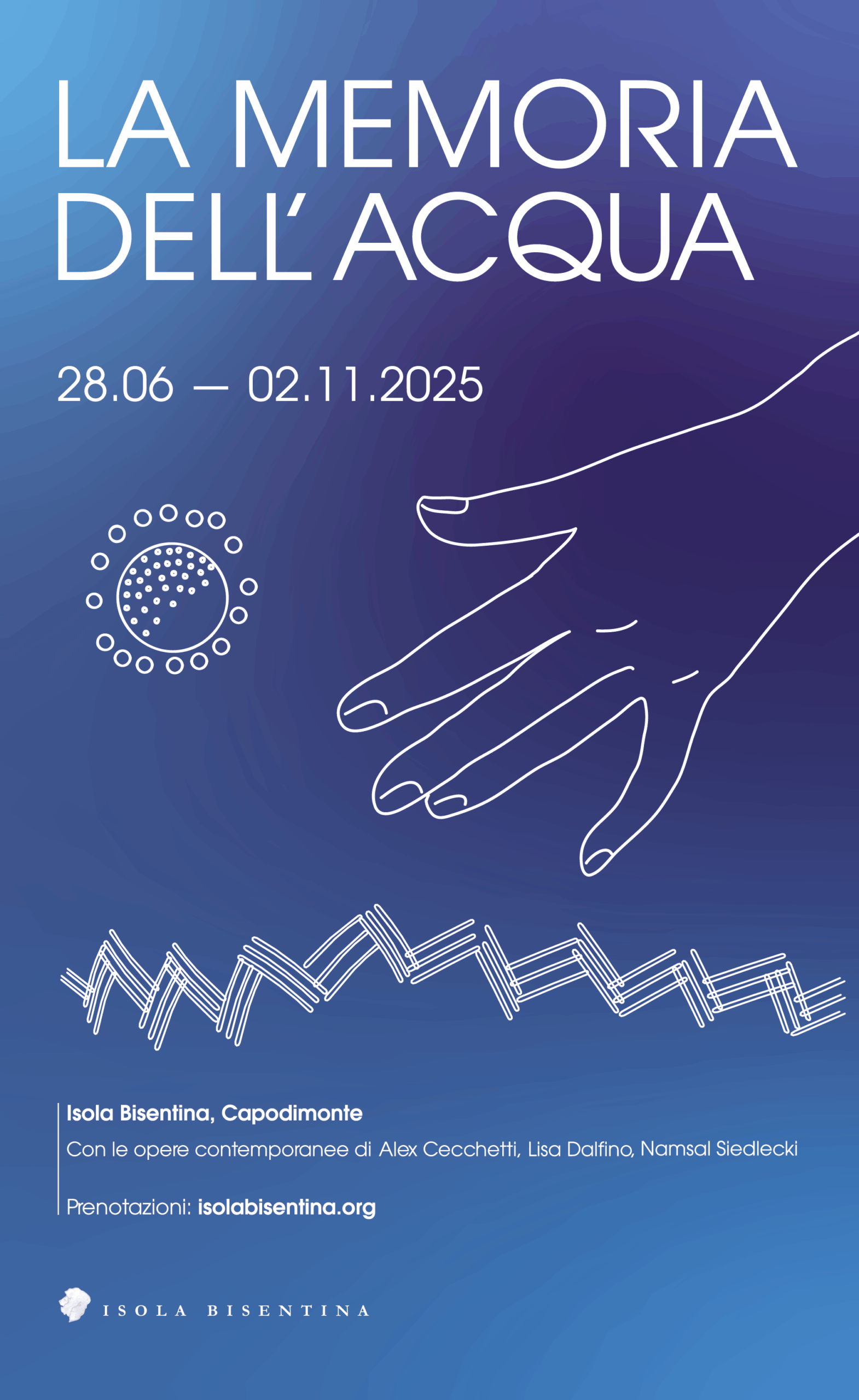
The exhibition draws inspiration from the most recent underwater explorations conducted by the Underwater Archaeology Service of the Superintendency of Viterbo, begun in the 1950s by Alessandro Fioravanti. These investigations now open up to suggestive hypotheses on the daily life, ritual practices and votive offerings of the ancient populations who inhabited Lake Bolsena, revealing their deep and ancestral bond with water.
Distributed in symbolic locations on Isola Bisentina, the exhibition presents site-specific interventions designed to open the new cultural season. The Malta dei Papi – a hypogeum excavated in Mount Tabor, probably intended for ritual functions already in the Etruscan era – hosts the delicate glass fragments by Lisa Dalfino (1987), which recall the form and meaning of ancient ex-votos. The Oratory of Monte Calvario and the Art Nouveau dock, recently restored and now the island’s landing point, host the alchemical sculptures of Namsal Siedlecki (1986), evocative of propitiatory gestures and votive practices. Finally, the Church of Saints James and Christopher hosts the works on paper by Alex Cecchetti (1973), which convey the suggestion of a lake bed and invite the public to witness a memory preserved by the conservative action of water.
The three artists have confronted the recent discoveries of now submerged protohistoric settlements, whose finds, perfectly preserved thanks to immersion in the lake water, bear witness to the objects of daily and ritual use of ancient local communities, revealing their spirituality and relationship with the lake environment.
The exhibition focuses on water: a natural force that destroys and conserves at the same time, an element of continuity between past and present, between memory and life.
The itinerary includes: the Church of Saints James and Christopher, the Old Italian Garden designed by Arabella Lennox-Boyd, the Darsena, the Chapel of the Crucifix or Monte Calvario, the Malta dei Papi and the Duchess’s bathroom.


